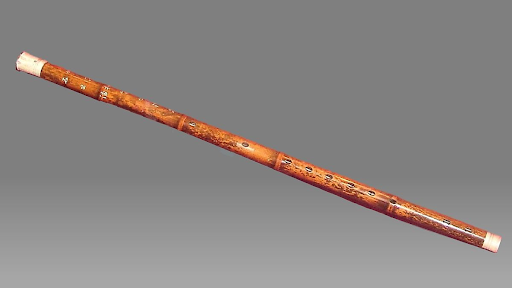
The Dizi is a traditional Chinese instrument that has been an essential part of the country’s music culture since ancient times. This relatively simple instrument provides a beautiful, resonant sound that can be utilized in solo, small ensemble or orchestra performances.
Structure
A dizi is typically a thin, hollow stick made out of an elegant yet durable material. The most common is bamboo, though jade and marble dizi’s are also popular. The average length is anywhere from 16 to 26 inches, depending on the desired pitch and note variety.
Dizis typically have ten holes- a blow-hole, a hole covered in a thin reed membrane (used to create the extra resonance that the dizi is known for), six tone (finger) holes, and two sound holes – the top and bottom of a dizi are both closed.
Techniques, Music and Sound
The dizi, though seemingly simple, is one of the most difficult instruments to master in the world. In order to utilize the instrument’s full capabilities, one must master countless blowing and tonguing techniques, not to mention several forms of air flow/breath. However, once mastered, the music a dizi produces is breathtaking as well as unique. The sound of a dizi, played correctly, can perfectly capture the cool, misty aura of a peaceful mountain or forest. In fact, with its light, airy touch, the dizi is known for being able to portray the sounds of nature. On top of this, however, it is also perfect for delicate emotions, like serenity and grief.
History
Officially, the dizi was brought back to China by Zhang Qian during the Han dynasty, following his expedition to Xiongnu. However, evidence suggests that transverse flutes have been present in China since long before Zhang Qian’s time. In fact, the oldest variation of the dizi ever excavated is thought to have been constructed 7,000 years ago, by the Hemudu clan in modern day Zhejiang. During the Tang dynasty, the dizi drew royal attention. Multiple documents record that various emperors during this dynasty enjoyed practicing the instrument. The following Song and Ming dynasties saw the dizi grow popular in opera and orchestra performances, eventually becoming a prominent accompanying instrument to many types of shows.


发表回复
要发表评论,您必须先登录。